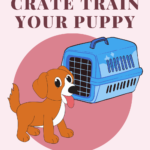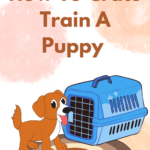Support for the blog comes from using the affiliate links below. At no additional cost to you, I may earn a commission on purchases. Thank you in advance.
If you are welcoming a new puppy into your family, one of the best things you can do is crate train them. Having a crate trained adult dog allows you to enjoy activities such as drinks in the bar or romantic meals without the worry that you will return home to a sofa torn to pieces! What’s more, as dogs are naturally den animals and like to be in confined spaces, crate training your dog offers them a safe space within your home that they can retreat to when they want to have some alone time.
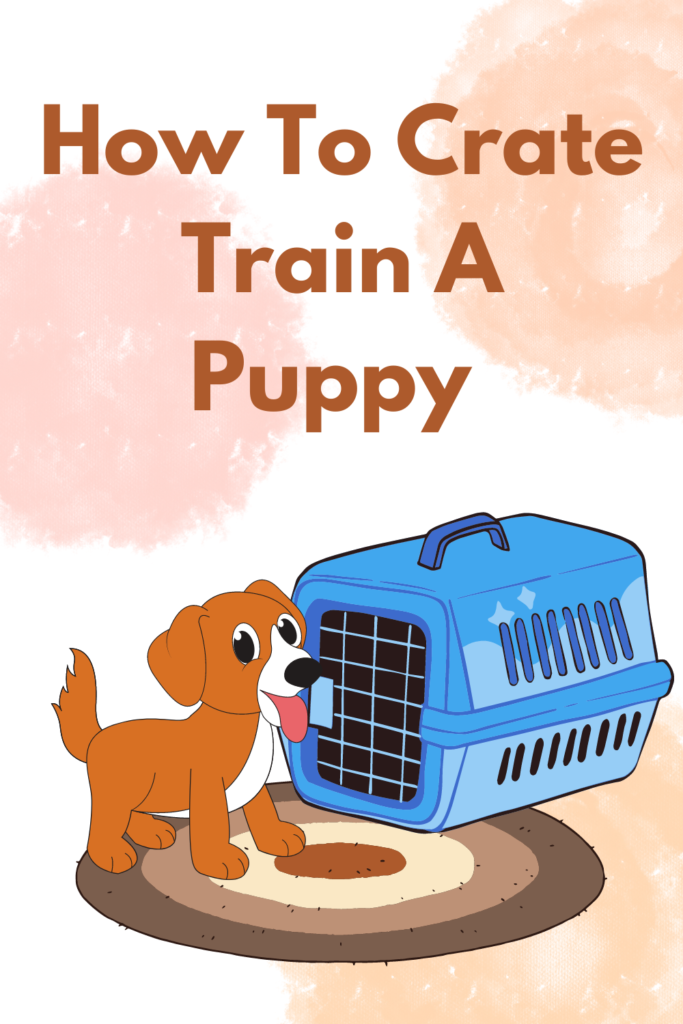
Benefits of crate training a puppy:
Reduces the risk of separation anxiety
As your pup becomes more comfortable with being alone in their crate, the chances of separation anxiety developing is reduced.
Helps speed up the potty training process
Because most dogs won’t go to the toilet where they sleep, crate training your pup will make the house training process that little bit quicker.
Reduces destructive behavior
If given the chance, puppies will chew on anything they can get their teeth on! By placing your pup in a crate you remove that opportunity which is perfect for when you’re not around to keep an eye on them.
Prepares your dog for traveling
There may come a time when you have to put your dog in a crate to transport them somewhere. This can be overwhelming for dogs so if they are already comfortable with being in confined spaces the process can be less traumatic for them.
The crate training process can seem overwhelming, but luckily it’s not as difficult as you may think. Follow these simple steps to crate train your puppy in no time!
How to crate train a puppy – a step-by-step guide:
Step 1: Choose the perfect spot
The ideal spot to place the dog crate is in a location that is quiet enough for your dog to relax but not so quiet that they will feel isolated from the family. A good spot is in the corner of a central room where you usually spend time like a family room or dining room.
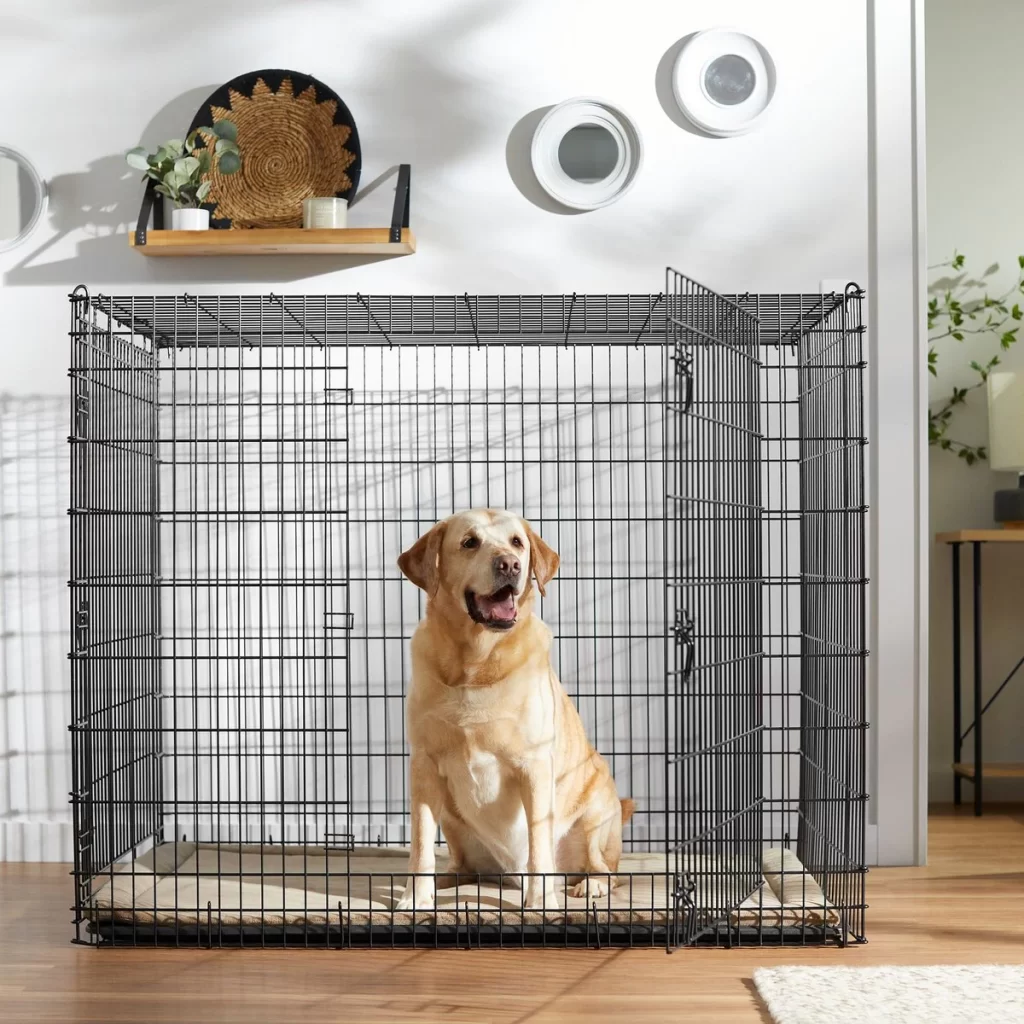
Step 2: Paw-sitive Reinforcement!
When introducing the dog crate to your pup, start off by leaving the door open. You want them to associate the crate with positive experiences, so don’t force them inside. Let them explore at their own pace until they’re comfortable going in and out on their own. Place their favorite toy and treats inside to reinforce the positive association.
Another great way to encourage your puppy into the dog crate is by feeding them their meals inside the crate. It’s important to keep the crate door open at this stage as you’re just focusing on building that positive association with the dog crate.
Step 3: Closing the Door
When the positive association with the dog crate has been made, it’s time to move on to the next step: closing the crate door. Allow your dog to have a potty break before you begin. Place a treat dispenser inside the crate for them to enjoy and practice closing the door whilst they are distracted. When they have finished their treats, open the door and let them out (if they want!). If at any point they show signs of wanting to be let out such as pawing or whimpering then open the door. It’s important to keep a positive association established. Remain at this step until your dog stops showing signs of wanting to be let out of the crate and they are calm and relaxed inside the closed crate door.
Step 4: Briefly leave the room
Now that your pup is comfortable eating in their crate and spending time there without becoming anxious or stressed, it’s time to start leaving the room briefly. At first, only leave for a few minutes at a time so they get used to being alone without getting stressed out. When you return to the room, do not make a fuss. It’s important to remain calm to show your dog that being alone in their crate is not a big deal. If your pup begins to whine or cry, wait until they stop whining before opening the door. If you open the door whilst they are whining you signal to them that this behavior results in them being released from the crate which is what you want to avoid.
Step 5: Leave the house
It’s now time to leave your pup in their crate whilst you leave the house. Before leaving make sure to give your pup a potty break and try tiring them out with some exercise so they have less energy to be anxious whilst you are away. Leave some water in the crate before leaving. Start of with small trips out such as visits to the store or running short errands. Just like with the previous step, don’t make a fuss when returning.
Choosing the Right Size Crate
When selecting a crate for your puppy, choose one that will be large enough for them to stand up, turn around, and lie down comfortably in. You don’t want to get a crate that’s too large, or they may use one end as a bathroom. Some crates come with separators for when the puppy is small which can then be removed when the puppy is fully grown specifically to avoid this problem.
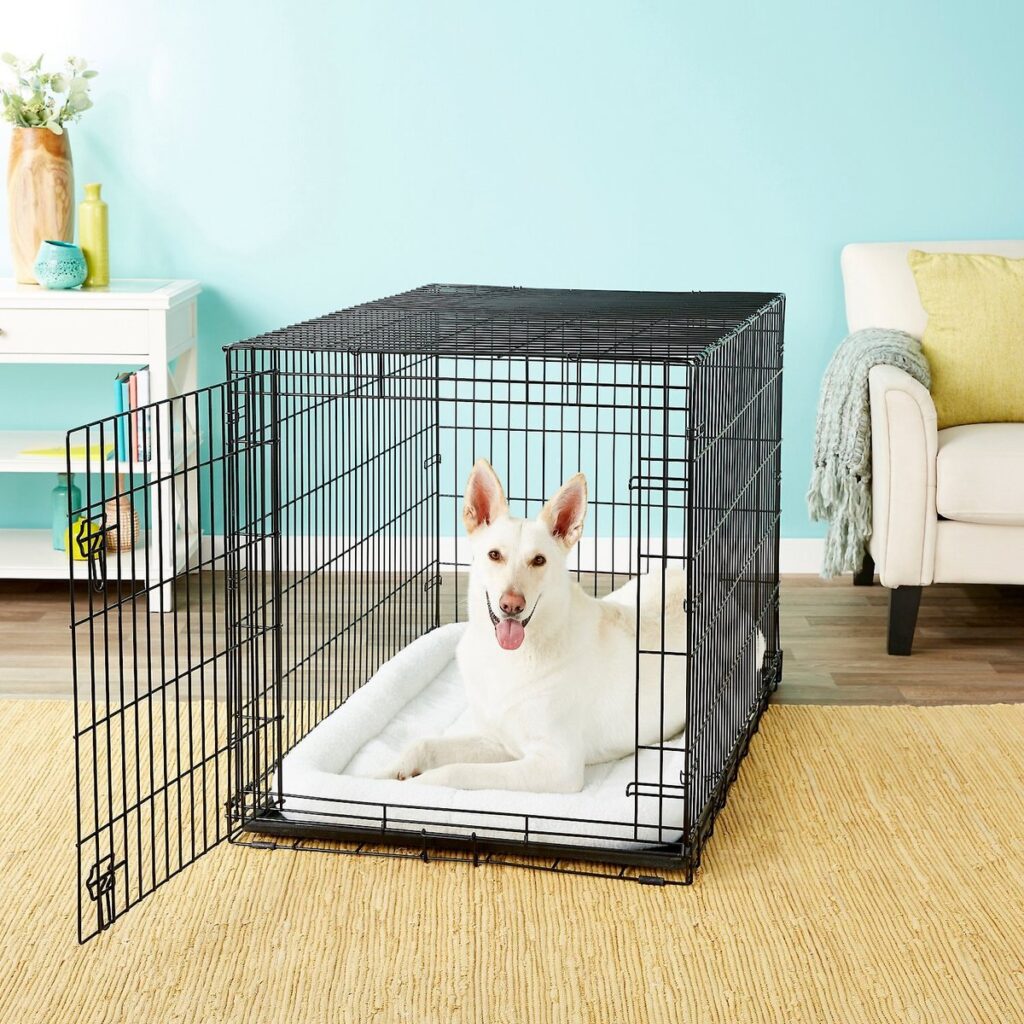
You can find crates made of plastic, metal, wire, or fabric. It’s really up to personal preference which type of crate you choose. Some people prefer metal or wire crates because they’re more durable and offer better ventilation. Others prefer fabric crates because they’re more portable and can blend in better with your home decor.
Crate Training a Puppy Tips and Tricks
Don’t use the crate as a form of punishment
Never use the crate as a form of punishment. The crate should only be associated with positive emotions. The dog may begin to see the crate as a scary place if they are told to go inside whilst being told off.
Don’t crate train a dog with separation anxiety
You want to avoid crate training a dog with separation anxiety because it will only aggravate their anxiety. If you crate train a dog with separation anxiety, they may start to associate the crate with being left alone which will only make their anxiety worse and ruins the hard work you did on making the crate a positive place.
Potty breaks
One important thing to remember while crate training is that young puppies have very small bladders and need to go potty frequently—usually every few hours or so (and sometimes even more). So make sure you take them out regularly to avoid any accidents inside their crates.”‘ Set an alarm if necessary so you don’t forget! And always take them out after naps and meals.
Conclusion
Crate training may seem daunting at first, but by following these simple steps you’ll have your pup happily spending time in their crate in no time! Just remember to remain positive, go slowly, and most importantly—have patience!
FAQs
Q: What if my puppy has an accident in their crate?
A: If your puppy has an accident in their crate, don’t react but simply clean it up. This is probably a sign you have left them in their crate for too long between potty breaks.
Q: What if my puppy doesn’t seem to be learning?
A: If your puppy doesn’t seem to be learning, try consulting with a professional dog trainer.
Q: When can I start crating my puppy overnight?
A: You can start crating your puppy overnight once they’re comfortable being crated for short periods of time during the day.
Q: Is crate training cruel?
A: In my opinion crate training definitely is not cruel. Your dog’s crate is its safe space within your home where they can be alone if they choose.
Q: How Long Can A Puppy Stay In A Crate?
It depends on their age and how often they need to go to the bathroom. Puppies can’t hold their pee for as long as older dogs can but here’s a general guideline.
- 8-10 weeks 30-60 minutes
- 11-14 weeks. 1-3 hours
- 15-16 weeks. 3-4 hours
- 17+ weeks 4–6 hours*
*When crated at night, puppies and adult dogs shouldn’t be left in their crate for more than 5 or 6 hours at a time.

